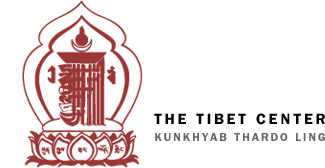The Venerable Dagpo Rinpoche discussed Boddhicitta at The Tibet Center. @ University Settlement 273 Bowery (and Houston St)
Watch the lecture here...
The Venerable Dagpo Rinpoche discussed Boddhicitta at The Tibet Center. @ University Settlement 273 Bowery (and Houston St)
Watch the lecture here...
|
Dagpo Rinpoche was born in 1932 in Tibet and at a very young age was recognized by the thirteenth Dalai Lama as a reincarnation of an important Buddhist teacher. Guided by some of the greatest twentieth century Tibetan masters including the mentors of the Dalai Lama, Kyabje Trijang Rinpoche and Kyabje Ling Rinpoche, the fourteenth Dalai Lama himself AND the Mongolian master Geshe Ngawang Nyima, Dagpo Rinpoche was educated in the purest and strictest monastic tradition. Under their guidance Rinpoche studied the Five Great Texts, Tantra (Rinpoche received many initiations and performed many retreats) and astrology, grammar, poetry and history. In 1959 Dagpo Rinpoche fled to India. Less than a year later he was invited to France to assist French tibetologists in their scientific research. From 1961 until his retirement in 1993 Rinpoche taught Tibetan language and civilisation and Buddhism at the School of Oriental Studies, (I.Na.L.C.O.) a part of the Sorbonne. He has co-authored a number of books on Tibet and on Buddhism. Now retired, he continues his personal research, practice and studies. In 1978 Rinpoche founded a Dharma centre in France, which received Buddhist congregation status from the French state and became Ganden Ling Institute in 1995. In 2005 a new temple was opened in Veneux-les-Sablons, where study weekends and retreats under the guidance of Dagpo Rinpoche are organized regularly. Since the late seventies Rinpoche has shared his vast knowledge of Buddhism with a wide public. On their request he teaches in various European countries, in Asia and in the United States. He has founded Dharma centres in France, the Netherlands, Malaysia, Indonesia and India. He travels to India yearly to maintain contact with his teachers and monasteries. In 2005 Dagpo Rinpoche completed a long term project, the reconstruction and transfer of the Dagpo Shedrub Ling monastery to the Kullu valley in Northwest India. The Dagpo Educational Fund @ www.thedagpofund.org |















